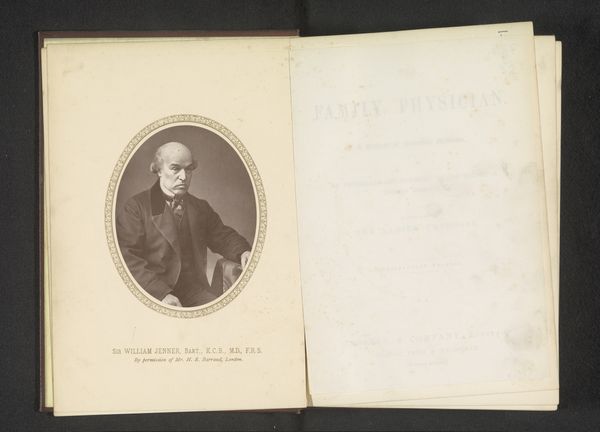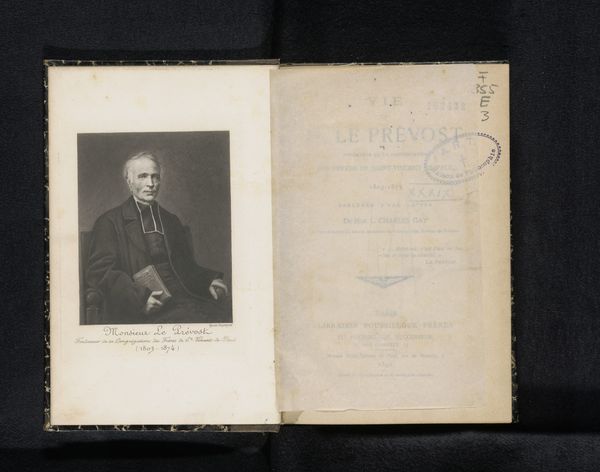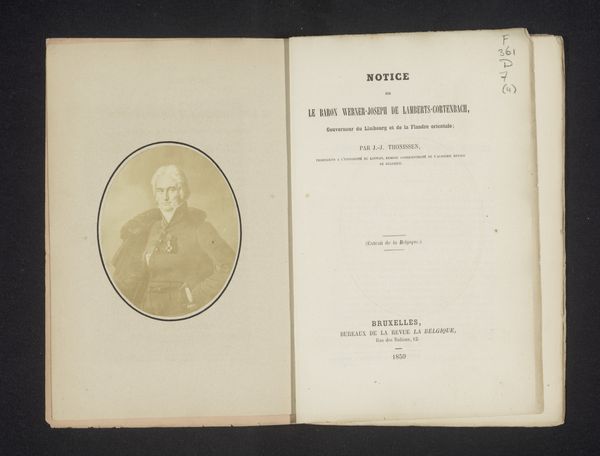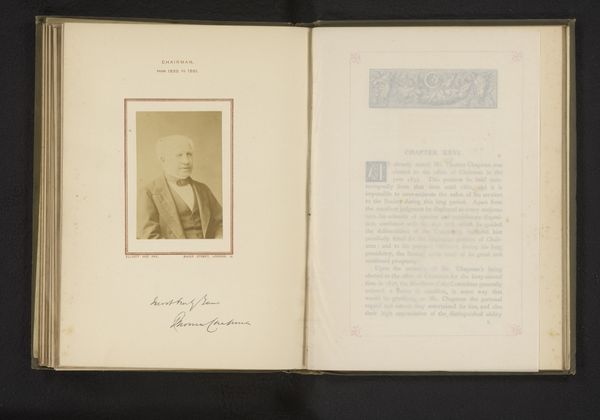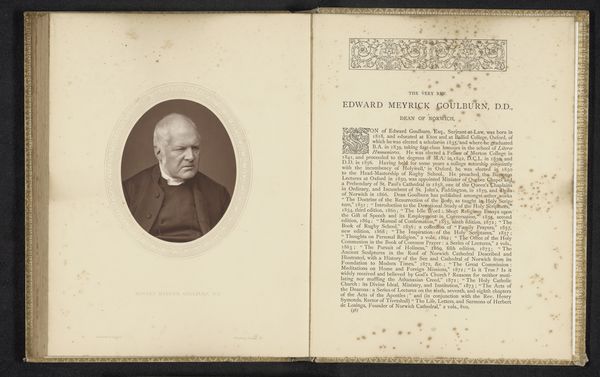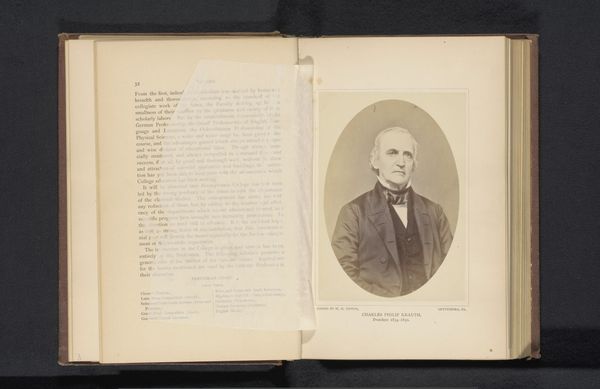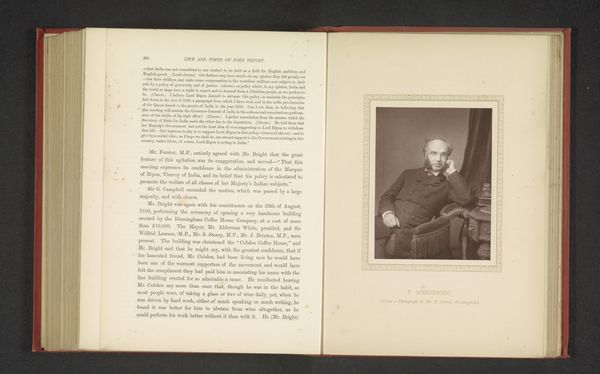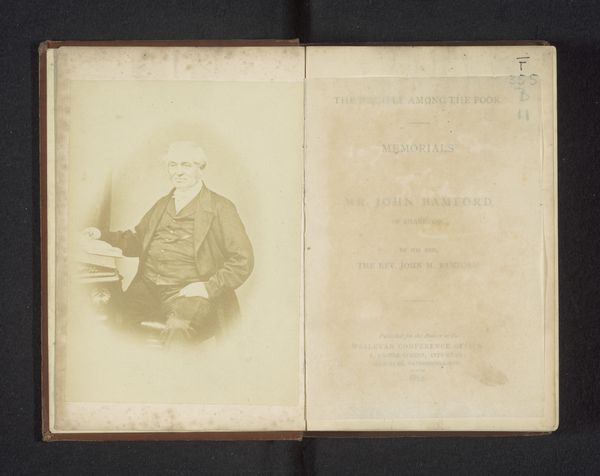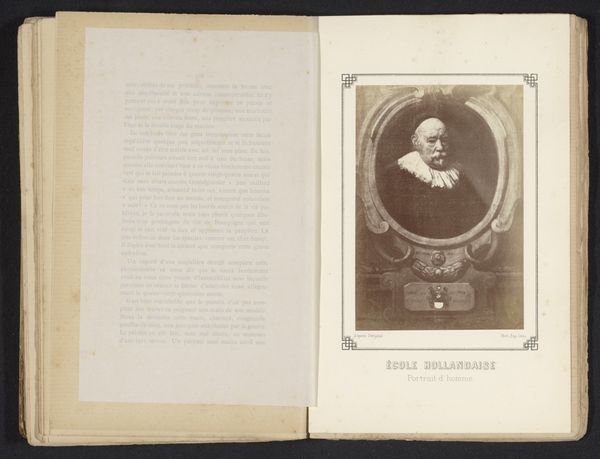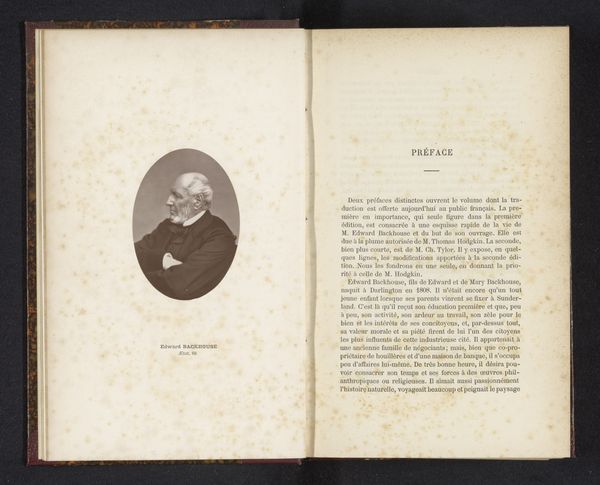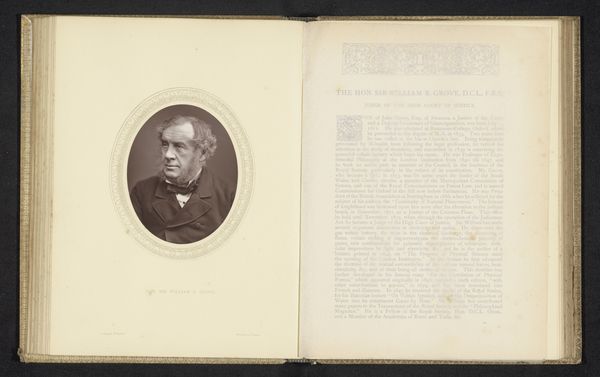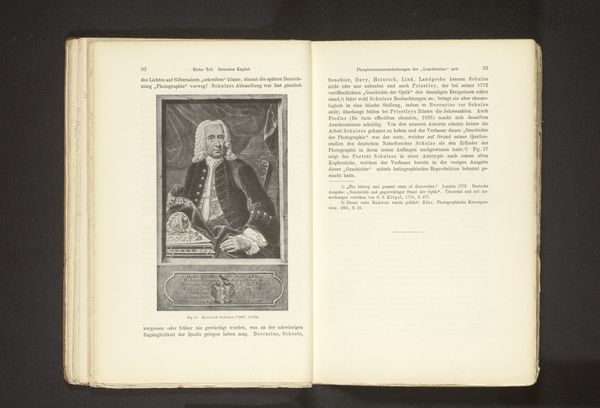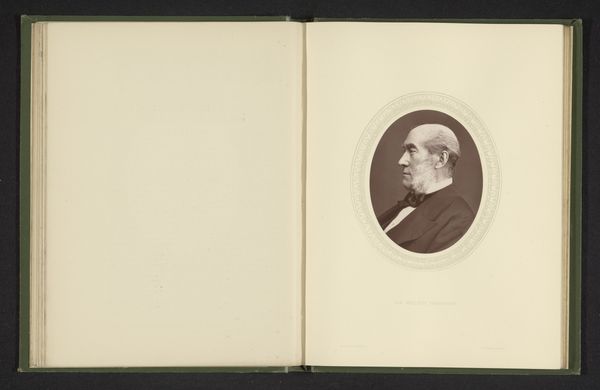
print, daguerreotype, photography
#
portrait
# print
#
daguerreotype
#
photography
#
academic-art
Dimensions: height 142 mm, width 109 mm
Copyright: Rijks Museum: Open Domain
Editor: Here we have a photographic portrait, likely a daguerreotype printed before 1871, titled *Portret van Alexander Hodgdon Stevens*. It feels so contained within this book! What strikes you about this work? Curator: What I find compelling is thinking about the labor and materials involved in producing this object. From the silver-plated copper used for the daguerreotype to the bookbinding itself, everything speaks to a specific mode of production and consumption in the 19th century. Editor: It's fascinating to think about how the image becomes part of a larger object, a book. Was this common? Curator: Precisely. The integration points to a blurring of boundaries between art, craft, and industry. The daguerreotype, as a reproducible image, democratized portraiture to some extent. Yet, embedding it within a book, like this "Discourse", suggests a different type of elite consumption. How does that change your perception of the portrait itself? Editor: I hadn't considered that it could signify elite status. I was thinking more about preservation. That’s interesting... Was photography seen as craft or high art? Curator: That's precisely the tension. Photography, then and now, challenges these hierarchical boundaries. Was the labor in producing multiple copies more like factory work than artistic practice? What does it say about how the public consumes images then and now? Editor: I hadn't thought about the social context that way before! So, it's less about the individual depicted, and more about the production of this image? Curator: It’s about understanding the image within its material and social context. The photograph becomes an object, something manufactured, and its meaning shifts when we consider its place in the broader network of labor and consumption. Editor: This really opens up how I view photographic portraiture. Thanks so much! Curator: A materialist reading lets us go deeper, revealing the intricate network of forces and materials at play in this image and how they reflect broader societal structures and historical context.
Comments
No comments
Be the first to comment and join the conversation on the ultimate creative platform.
